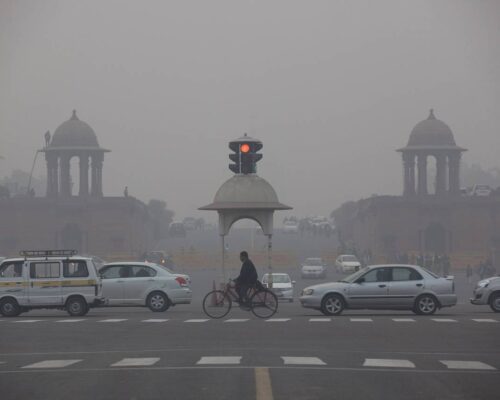Are Carbon Emissions Decreasing?
26 March 2024 – by Viktor Tachev
The IEA’s latest report has found that while carbon emissions aren’t decreasing yet, they are slowing in growth. The main reason is the increased clean energy deployment worldwide, with China as the undisputed leader. However, despite the promising signs, the growth in clean energy deployment and emissions reduction progress remain insufficient to achieve the COP28 target and Paris Agreement goals. Whether the world succeeds in speeding up its progress will largely depend on developing Asia.
IEA: A Surge in Clean Energy Technology Deployment in 2023
The IEA’s Clean Energy Market Monitor report from March 2024 examines the strides in global clean energy deployment from the previous years. It has found that due to ambitious policy support and continued cost declines, clean energy investments jumped by almost 50% to USD 1.8 trillion between 2019 and 2023.
In 2023, annual solar PV and wind additions increased by 85% and 60%, respectively. The total capacity deployment for the two technologies reached 540 GW.
Electric vehicle (EV) sales jumped 35%, reaching 14 million cars. Alternatively, one in five vehicles sold globally over 2023 was electric.
However, the agency warns that the benefits of increased clean energy adoption remained disproportionately spread. Continuing a trend from the previous years, most of the deployment has taken place in China and developed economies. These countries were responsible for 90% of the new solar and wind power capacity additions and 95% of global EV sales.
China, in particular, was responsible for most of the solar and wind deployment over the past year. Furthermore, one in three cars sold there was electric, compared to one in four for the European Union.
Worryingly, the IEA finds that energy efficiency is lagging. At 1%, the improvements in 2023 remain four times lower than the 4% annual target by 2030, agreed to at COP28.
Renewables Register Double the Growth of Fossil Fuels
According to the IEA report, between 2019 and 2023, clean energy growth outpaced fossil fuels by 2:1.
Low-emission electricity increased by 1,800 TWh, compared to 850 TWh for fossil fuel-produced power. End-use clean energy consumption grew two times that of fossil fuels. Solar and wind were the driving forces behind the growth, while hydropower and nuclear stagnated.
Between 2019 and 2023, the deployment of solar, wind, nuclear, EVs and heat pumps collectively avoided the equivalent of 5% of the annual fossil fuel energy demand across all sectors in 2023. For reference, this is equal to Japan and Korea’s combined total energy demand from all sources last year.
The analysed clean energy technologies have helped avoid 2.2 billion tonnes of emissions annually between 2019 and 2023. The IEA concludes that the increase in CO2 emissions globally over the same period would have been over three times larger without them. Over the past five years, solar alone, for example, has helped avoid the equivalent of Japan’s entire energy sector’s annual emissions, 1.1 billion tonnes. In some markets, the impact was even more significant.
Together, solar and wind power helped avoid the equivalent of 580 million tonnes in coal demand. This is 30% higher than the actual increase in global annual coal demand between 2019 and 2023. It also equals the yearly coal demand for electricity generation in India and Indonesia combined.
The avoided gas demand, thanks to clean energy technologies, was almost double the global annual natural gas demand increase between 2019 and 2023. The IEA notes that this is “more than the pre-invasion pipeline exports from Russia to the European Union”.
IEA: Huge Clean Energy Adoption Limited the Rise of Carbon Emissions in 2023
The IEA’s CO2 Emissions in 2023 report found that due to droughts affecting the global hydropower fleet, carbon emissions continued to increase. However, the rise was lower than the previous year, mainly due to the expansion of solar, wind and EV technologies.
More importantly, CO2 emissions lessened despite the accelerated total energy demand.
In 2023, emissions increased by 1.1%. Although less than in 2022, this remains far from the level required to meet the global climate goals set out in the Paris Agreement.
China, the US and several other economies were the main contributors to the rise in CO2 emissions in 2023. Their shift to fossil fuels to compensate for the droughts affecting hydropower contributed to over 40% of the increase.
However, the silver lining from the IEA’s report is that the emissions of advanced economies dropped to a 50-year low. Their coal demand fell back to levels unseen since the early 1900s, while their GDPs continued to grow. According to the IEA, nearly two-thirds of the decline in emissions from advanced economies in 2023 occurred in the electricity sector. Behind the promising developments is a combination of strong renewables deployment, coal-to-gas switching, energy efficiency improvements, and softer industrial production.
In fact, 2023 became the first year in which at least 50% of electricity generation in advanced economies came from low-emissions sources like renewables and nuclear. Renewables alone accounted for an unprecedented 34% share, while coal’s share plummeted to a historic low of 17%.
At the same time, China’s deployment of clean energy technology continued to be unrivalled. In 2023, the country was responsible for around 60% of the global additions in EVs, solar PV, and wind power capacity.
The Carbon Emissions Landscape Is Shifting: Emerging and Developing Asia Fuels Growth
The IEA identifies the emerging and developing markets’ demand for coal, which accounted for around 70% of the increase in global emissions from energy combustion in 2023, as the biggest driver in global emissions growth.
However, the agency finds that the landscape of emissions is changing, with Asia firmly establishing itself as the global leader.
For example, China’s total CO2 emissions in 2023 were 15% higher than those of advanced economies. India overtook the EU to become the third-largest source of global emissions in 2023. Countries in developing Asia now account for around 50% of global emissions, up from around 40% in 2015 and around 25% in 2000.
On the Right Path, But Carbon Emission Reductions Should Be More Ambitious
The IEA notes that if not for the significant droughts that caused a global shortfall in hydropower generation, emissions from the global electricity sector in 2023 would have fallen.
IEA Executive Director Fatih Birol says, “The clean energy transition has undergone a series of stress tests in the last five years – and it has demonstrated its resilience.” He adds, “A pandemic, an energy crisis, and geopolitical instability all had the potential to derail efforts to build cleaner and more secure energy systems. Instead, we’ve seen the opposite in many economies.”
However, bringing the energy transition progress up to speed, in line with the timeline for achieving the global goal of tripling renewables capacity by 2030 and limiting emissions in line with the Paris Agreement goals, requires additional efforts.
Clean energy deployment growth should be more evenly spread, with developing and emerging economies demonstrating more ambition and receiving the needed investments to prioritise cheaper, cleaner and more secure energy. Furthermore, it should be paired with ambitious policy support for emissions reduction through curbing fossil fuel development, specifically in developing Asia – the global stronghold of CO2 emissions.
by Viktor Tachev
Viktor has years of experience in financial markets and energy finance, working as a marketing consultant and content creator for leading institutions, NGOs, and tech startups. He is a regular contributor to knowledge hubs and magazines, tackling the latest trends in sustainability and green energy.
Read more










